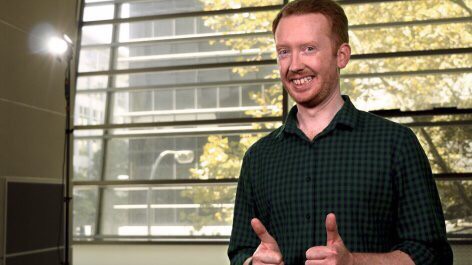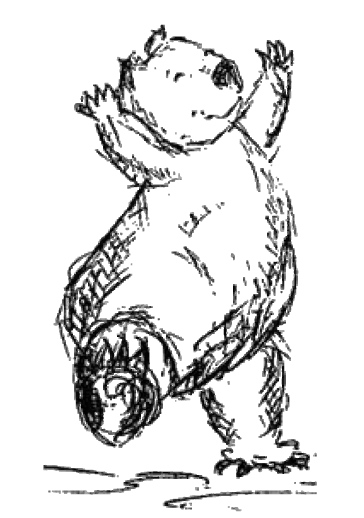I never wanted to be born with brown, curly hair. My best friend in primary school was from Hong Kong, and boy, I envied her long, straight, black locks. Swishy. Mmmm. But I was stuck with stubbornly thick waves that flatly refused to obey any directions from a brush.
As for combs – forget it. I couldn’t even drag a comb through my hair.
As I grew older, I realised that the brown could be banished with hair dye and the stubborn curls punished with a straightening iron and loads of “product”. But dye is not forever (unless it’s Bolognese sauce down the front of your best white shirt), and honestly – ironing clothes is tedious enough without adding your hair to the list. I just had to accept that my somewhat wild and woolly mop was an intrinsic part of me. Sure, it could be altered on the surface, but that was all.
Life with brown hair wasn’t too bad. I mean, who gets teased for the colour of their hair. Really. Hang on, wait a mo – Luke McGregor? You’re kidding? That lovely young comedian on the ABC? Yep – turns out he was teased at school for his appearance, which – among other things – included “big red hair and real thick glasses” (See his interview on One Plus One, iview.abc.net.au) Far out. Get a life, kids.

If students are still getting picked on for the colour of their hair, where does that leave our special needs kids? Perhaps they’re relatively safe in the bounds of their specialist schools, but what about when they leave? And what about all those students with special needs who haven’t found a place in the specialist system and have been left trying to navigate the mainstream. With the same ease of a salmon trying to swim upriver. How are their different needs going to be accepted, understood, celebrated?
Politicians and other leaders in our society love to boast that Australia is a multicultural nation that celebrates diversity. By and large, I agree. However, when you live with difference, and are in a minority because of it, sometimes you experience behaviours and attitudes which are at odds with this championed notion of “diversity”.
Clearly, not everyone is naturally empathetic. So learning skills and strategies to help kids understand difference is essential. In the end, we are all just people who want to be accepted for who we are, and to build a fulfilling life in relationship with others.

Ignorance is the challenge – not difference. Guess what. Autism isn’t “catching”. Cerebral palsy isn’t “catching”. Neither is brown hair. Lice? That’s another story. Having Asperger’s is not a lifestyle choice, believe me.
When I see the struggles of my wonderful HFASD wombats, my heart bleeds. Looking in from the outside, it could be so easy to say, well, why don’t you just x, y, z. Why don’t they just a,b,c – it can’t be that hard. Well, you know what – it IS that hard. And that’s one of the most frustrating things for all involved. It seems like it should be easy… But it’s not.
I don’t want to see my kids bullied for who they are, judged because of what they aren’t and defeated by some narrow notion of the “right” way to be.
Clearly, not everyone is naturally empathetic. So learning skills and strategies to help kids understand difference is essential. In the end, we are all just people who want to be accepted for who we are, and to build a fulfilling life in relationship with others.
It is immaterial whether our diversity relates to gender, sexual orientation, cultural background, language, religion, physical or intellectual differences. If I’m to help my Dancing Wombats thrive in this world, they need to know that I love them for who they are. That doesn’t mean they’re perfect, or can get away with being rude, not tidying their rooms, or helping with the dishes! Far from it. But they need to know I accept that their fundamental, immutable characteristics are intrinsic to what makes them the unique individuals who I love without reservation.

Perhaps one day, as a result of anti-bullying programs in schools (like Bully-Busters TM, Bully Stoppers, or Safe Schools) we will see an even more cohesive nation, guided by a new generation of more empathetic and less aggressive leaders. Those who use skills and strategies they have learned at school to knit our diverse community together, plain and purl alike, not dropping stitches, not casting off, but creating a beautiful and varied pattern that truly does celebrate our differences while bringing us all together.


